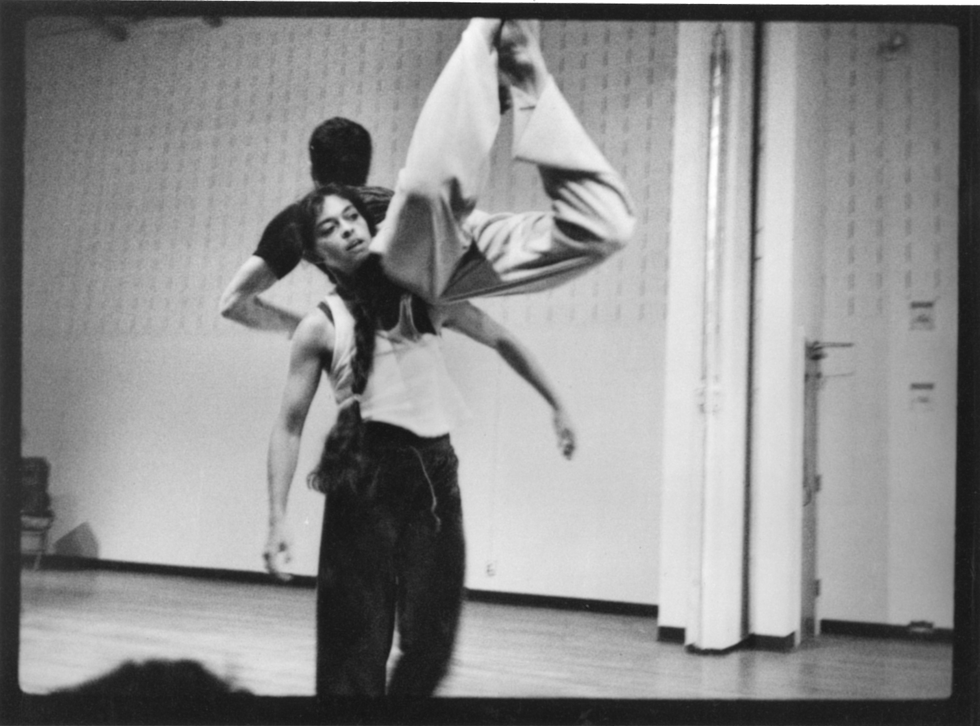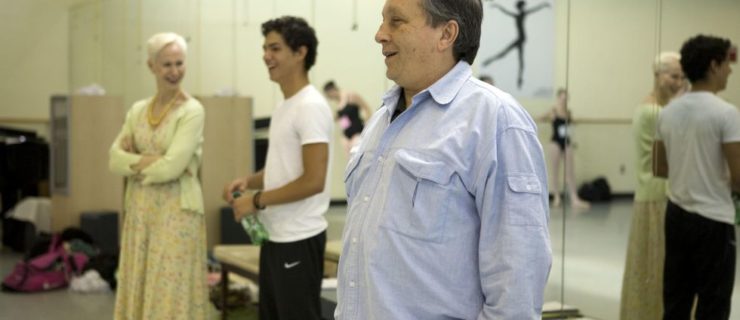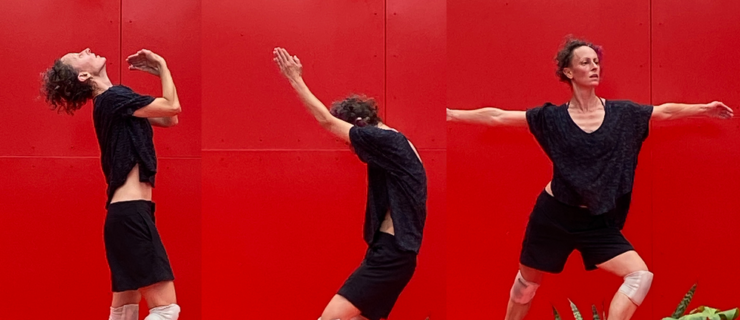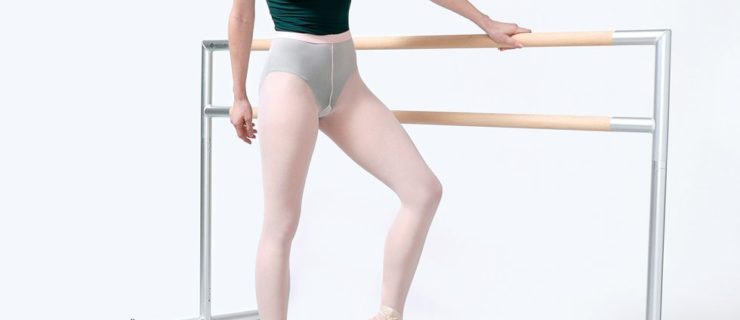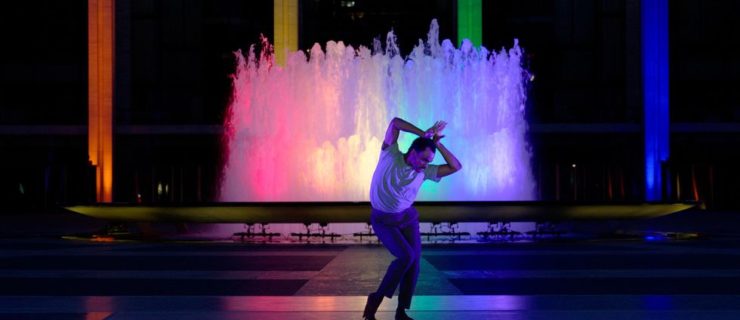Remembering Contact Improv Co-Creator Nancy Stark Smith, 1952-2020
Co-creator of Contact Improvisation, improviser extraordinaire, and founder and co-editor of Contact Quarterly, Nancy Stark Smith passed away on May 1. A force as a dancer and an educator, she created a network of love for improvisation on a global scale. She died in her home in Florence, MA, of ovarian cancer. Messages from all over the world registered shock, sadness and poetic memories on social media.
She cracked open gender codes in dance with one casual comment. After watching Steve Paxton’s Magnesium (1972), a dance of hurling and falling for men, she told Paxton, “If you ever work like this with women, I’d love to know about it.”
She was a buoyant yet grounded improviser. Whether springing up out of the floor or boomeranging off another person, she made the pleasure of touch visible. She had a wondrous way of talking/writing about the sensations of momentum that drew people in.
On Facebook, her friend and early CI dancer, Christie Svane, wrote, “Our beloved Nancy Stark Smith left her wild and gentle dancing, unique, glorious, fearless body on Earth and made for home. Her collaborator and companion, Mike Vargas, pianist, composer and sound artist, was by her side at home in Florence, Mass. with her beloved flower garden beginning to bloom.
“I never knew how she did it, but I know she held every person she ever danced with, taught, learned from, laughed, sang or shared watermelon with, in the unchanging place in her heart. Our sweet soul sister, seen so often flying through the air, her silver braid aloft, was a bonafide bodhisattva, a visionary spreading seeds of inner art and compassion.”
Ishmael Houston-Jones simply posted the words “I’m shattered, R.I.P. Nancy Stark Smith.”
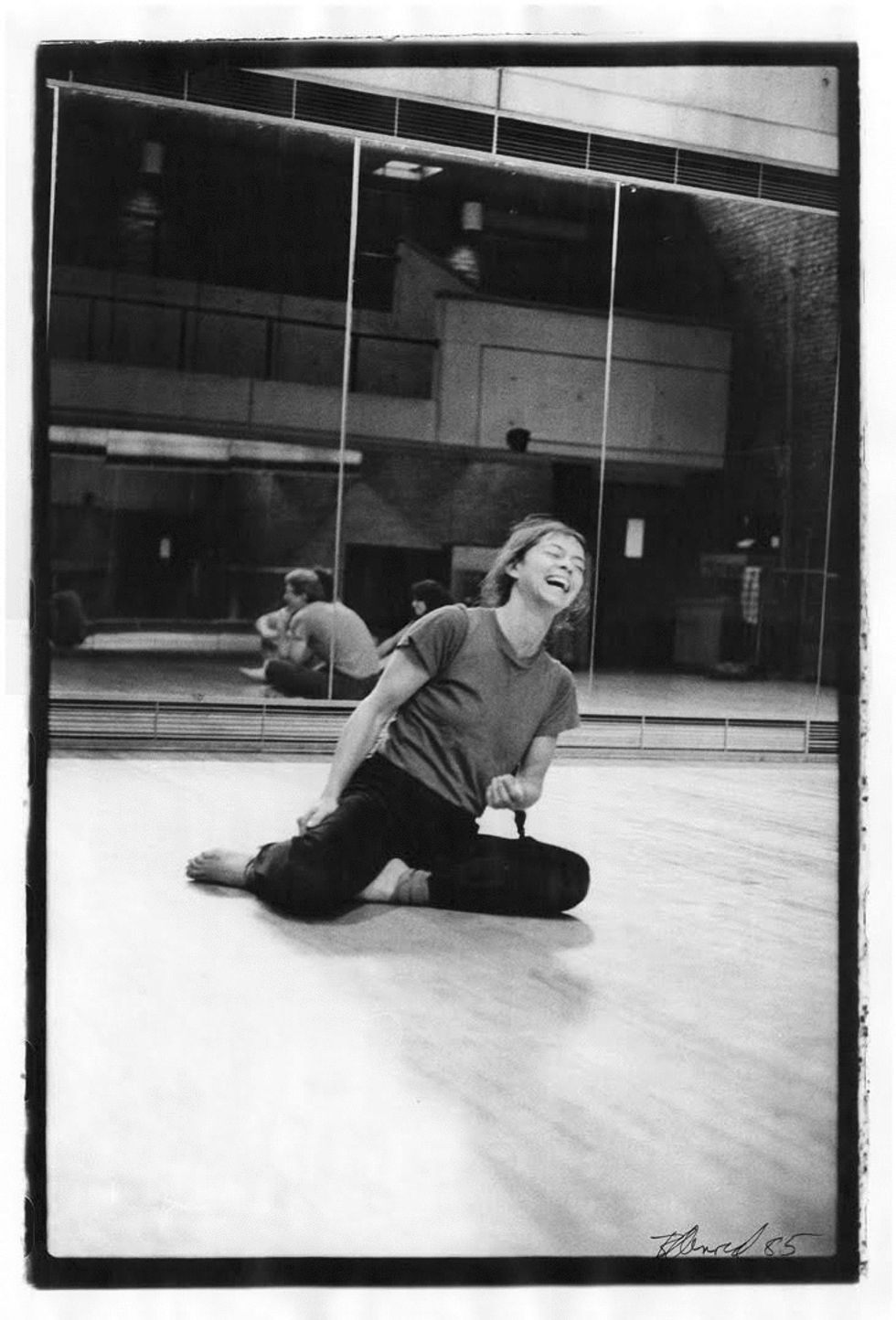
Nancy Stark Smith grew up on Long Island. Her mother died of breast cancer when she was 5. Her father, who was a doctor, remarried when she was 10. There was tension in the household, so Nancy signed up for a slew of after-school activities like volleyball, gymnastics, poetry club and madrigal choir. She competed as a gymnast, her specialty being the uneven parallel bars.
When she went to Oberlin College she encountered two formidable women in the dance field: Twyla Tharp and Brenda Way.
Tharp came to lead a residency during the January 1971 Winter Term (a three-or-four-week session for outside projects or special on-campus offerings). “That month with Twyla, was really the opening for me into dancing,” Stark Smith told me in 2017. “I was still an athlete and gymnast and I wasn’t interested in dance, but two friends wanted to stay on campus. I did and it totally blew my mind. Twyla pointed to her dancer, Rose Marie Wright and said, ‘Do what she’s doing.’ I didn’t even notice she was doing anything; she was scratching her nose and fixing her hair and shifting her weight. But that was the thing we were supposed to be noticing and doing. So the field had already opened up for all kinds of movement to be included in a choreographers palette. Twyla’s piece [The History of Up and Down, I & II] was tightly choreographed but it included all different kinds of movement. I rolled and I jumped and I ran and did various things….The mind of the work—what she was thinking about and how she was talking about movement and timing and relationships of material —was much closer to my training in poetry and writing, which was always also a part of my life.”
The second powerhouse was Brenda Way, the maverick teacher who had invited Tharp in the first place. When Way saw Stark Smith’s performance in Tharp’s work, she invited her into the student dance company (which later became Oberlin Dance Collective). So when the next Winter Term intensive came around, and the cool new visiting group was the improvisational Grand Union, Stark Smith naturally enrolled. She took workshops with GU members Yvonne Rainer, Barbara Dilley, David Gordon, Nancy Lewis and Lincoln Scott. She also took Paxton’s pre-dawn “Soft Class” in which she learned his “small dance,” an introduction to the body/mind consciousness necessary for the kind of dance dialogue Paxton was developing that became Contact Improvisation.
In response to that famous moment when she announced her willingness to cross the gender divide, Paxton was caught off guard: “I was startled,” he wrote later. “It had not occurred to me that such a rough-and-tumble dance would be of interest to a woman.”
But he took her up on it. That June, to prepare for a performance at the John Weber Gallery in SoHo, he invited several colleagues (including Dilley and Mary Fulkerson) and students to work and live together in a Chinatown loft for 10 days.
In Cynthia J. Novack’s Sharing the Dance, Stark Smith describes the scene: “We kind of lived in the midst of whatever it was that was beginning to take effect, because we spent so much of the day rolling around and being disoriented and touching each other and giving weight. The fact that we weren’t working towards anything…gave it a feeling of freedom to play with things… Everyone had a different way of doing it—but we had to work together… How to live together as a group and how to do this movement were equally new ideas to me.”
At the beginning, she and Paxton and others sought to define CI with phrases like “a cross between jitter-bugging, wrestling, and making love.” Or “a duet movement form based on the communication between two moving bodies that are in physical contact and their combined relationship to the physical laws governing their motion—gravity, momentum, inertia, centrifugal force, etc.” (All quotes unless otherwise indicated are from the book co-written by Stark Smith and David Koteen, Caught Falling.)
She defined a “contact high” as an alert state: “Every part of me feels very alive—turned on, awake, present, ready, both comfortable and on my edge, sharpened and softened, deepened and extended, challenged and soothed, and physically and energetically tuned to myself and others.”
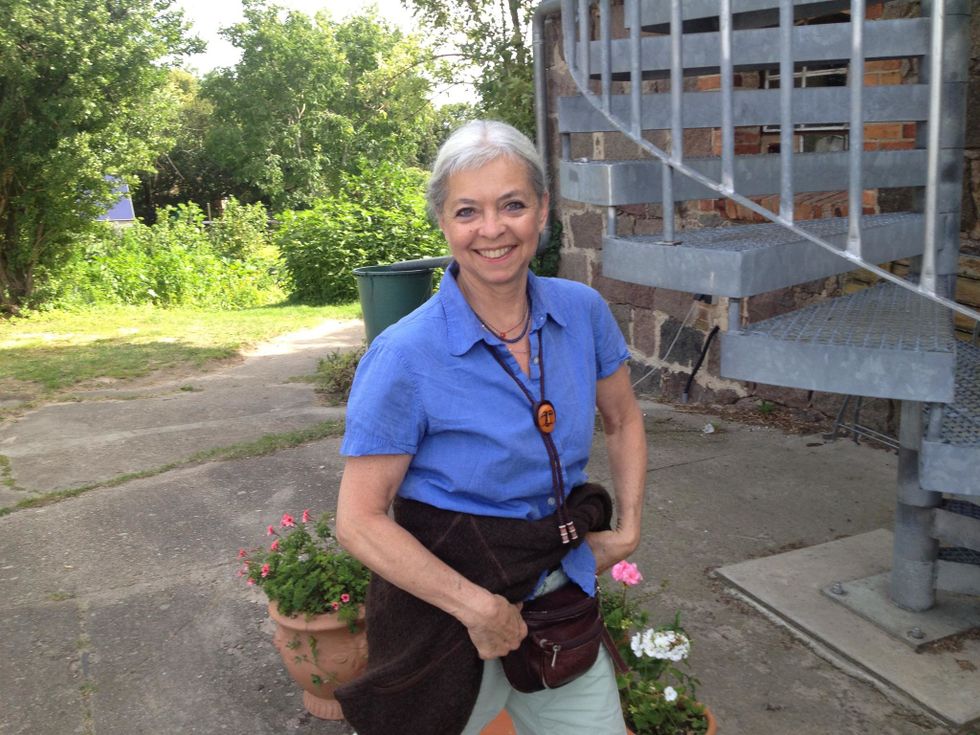
Courtesy Peter Pleyer
She was traveling to gigs with Paxton, and some of these gigs were shared with Grand Union. Fascinated by them as individuals and as a group, she would watch their performances and “study how things arose and how they developed, when they were killed by something somebody did, or resurrected, how they survived each other, how the material grew. I was just in awe of this, it was like magic.”
Other influences were Simone Forti, Lisa Nelson, tai chi and Buddhist practice.
At Naropa Institute in 1974, she also met Allen Ginsberg, William Burroughs and Diane di Prima (a poet who had written the only review of the first Judson Dance Theater concert in 1962). This led to Stark Smith apprenticing for di Prima.
During this period, she started a newsletter for CI practitioners. She used di Prima’s typesetting machine. When this grew into Contact Quarterly, she would pack up her printing equipment in her jeep (later a pickup truck) while traveling to CI gigs and produce CQ on the go.
CQ,
which was co-edited by dancer Lisa Nelson, expanded into areas related to CI like somatic movement and experimental dance in general. It was popular with college-level dancers and thinkers and fueled a global network of improvisors.
Although Paxton is credited with inventing, or initiating CI, it was Stark Smith who became the chief educator and organizer. Of her role, she said, “I watered the new plant with my attention, intelligence, enthusiasm, and body. I helped it grow and influenced certain directions in its development. Communication and articulation within the work—through dancing, teaching, performing, writing/publishing, talking, listening—have always been of great interest to me.”
Stark Smith traveled often to give workshops around the world, increasingly to sites in Asia and South America. She considered home to be the place where her fellow dancers were her “next of skin.”
Before you view this clip of her with Steve Paxton in the CI documentary Fall After Newton (video by Steve Christiansen), read what she wrote about her father:
“My father was always very affectionate and physical with us… He used to swing me from his neck; I’d clasp my hands around his neck and he’d bend over and swing. He found it hard to refuse me, even when I had become too big for it; he ended up in a neck brace with several cervical dislocations.”
Starting in 1990, Stark Smith developed a sequence called Underscore. This approach aimed to incorporate CI into a broader range of improvisational methods—both solo and group work. The four-hour sessions take participants through a range of different states of dancing. In the last couple decades there’s been an annual Global Underscore event, with 50 to 70 sites participating. In 2006, the cities included Northampton, Los Angeles, London, Paris, Helsinki and Melbourne.
In an interview in 2017, she told me, “I always thought of this work of discovery as a kind of American pioneering spirit: If there’s something you want to bring forward that hasn’t existed before, then you have to break ground. You just do it and see what happens.”
